Whenever I am leaving Venice I feel sad and a little emotional. However I’ve discovered a solution, and that solution is to visit another beautiful place in Italy. Immediately. Somewhere close by and completely different.
A perfect destination is the small town of Classe, just south of Ravenna. As I get in the car to start my journey the old ‘Romea Road’ beckons me around the lagoon of Venice before unfolding southwards along the Adriatic Coast, stretching eventually to Rome. This road was built by the Romans. Legions of soldiers have marched on this soil. More than 2000 years of history embedded in this ancient route.
The lagoon stretches languidly to the horizon. There is water everywhere. Fishermen’s nets dry in the noon sun. Boatyards appear at frequent intervals. South of Chioggia there’s even a commercial port, where the ships reverse into berths just feet from the road. It’s a surreal experience to see these cargo ships parked so close to the highway. They appear to be high and dry, the remnants and debris of a huge tidal wave perhaps.
POMPOSA – At Pomposa the road swings past an old abbey with a beautiful Romanesque bell tower. Hundreds of monks lived here. Tending the gardens, studying religious texts and praying. Years ago I was taught that Guido d’Arezzo devised the musical scale in this very place. Italy’s like that, every stone has a story to tell – I just have to keep looking and listening. Always.
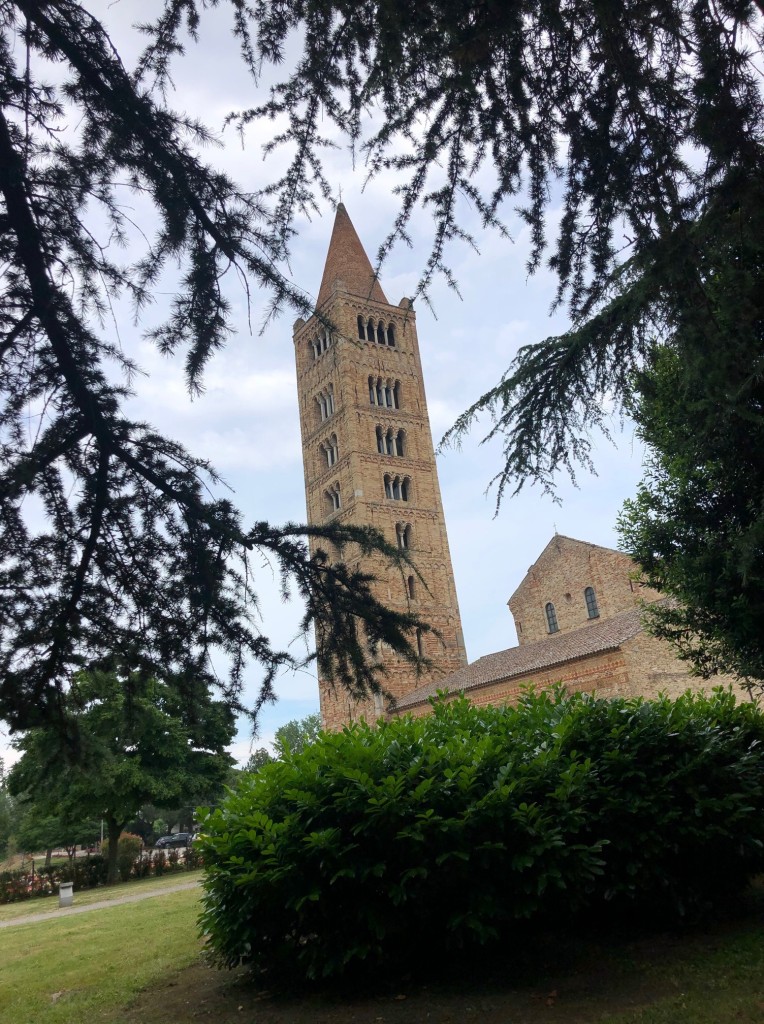






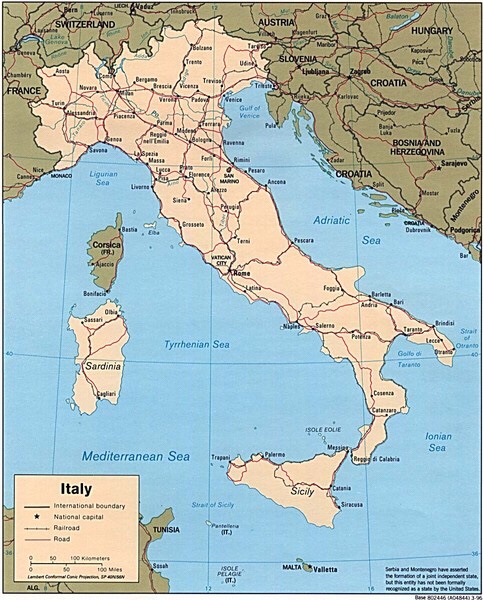

Route from Venezia to Chioggia and on to Classe, just south of Ravenna. Total of 160 kms. Approx – 2 hours 30 minutes – driving.
TO THE WEST is the vast lagoon area of Comacchio. A wetland area famed for fishing, especially eel fishing. In the old days a huge canning factory processed and cooked eels by the thousands. A line of wood ovens cooked the fish, draining off the oil and then preserving the eel meat in brightly coloured tins. The tins were then shipped all over Italy and even to North America. A taste of home for Italians living in Brooklyn, Queens and The Bronx.

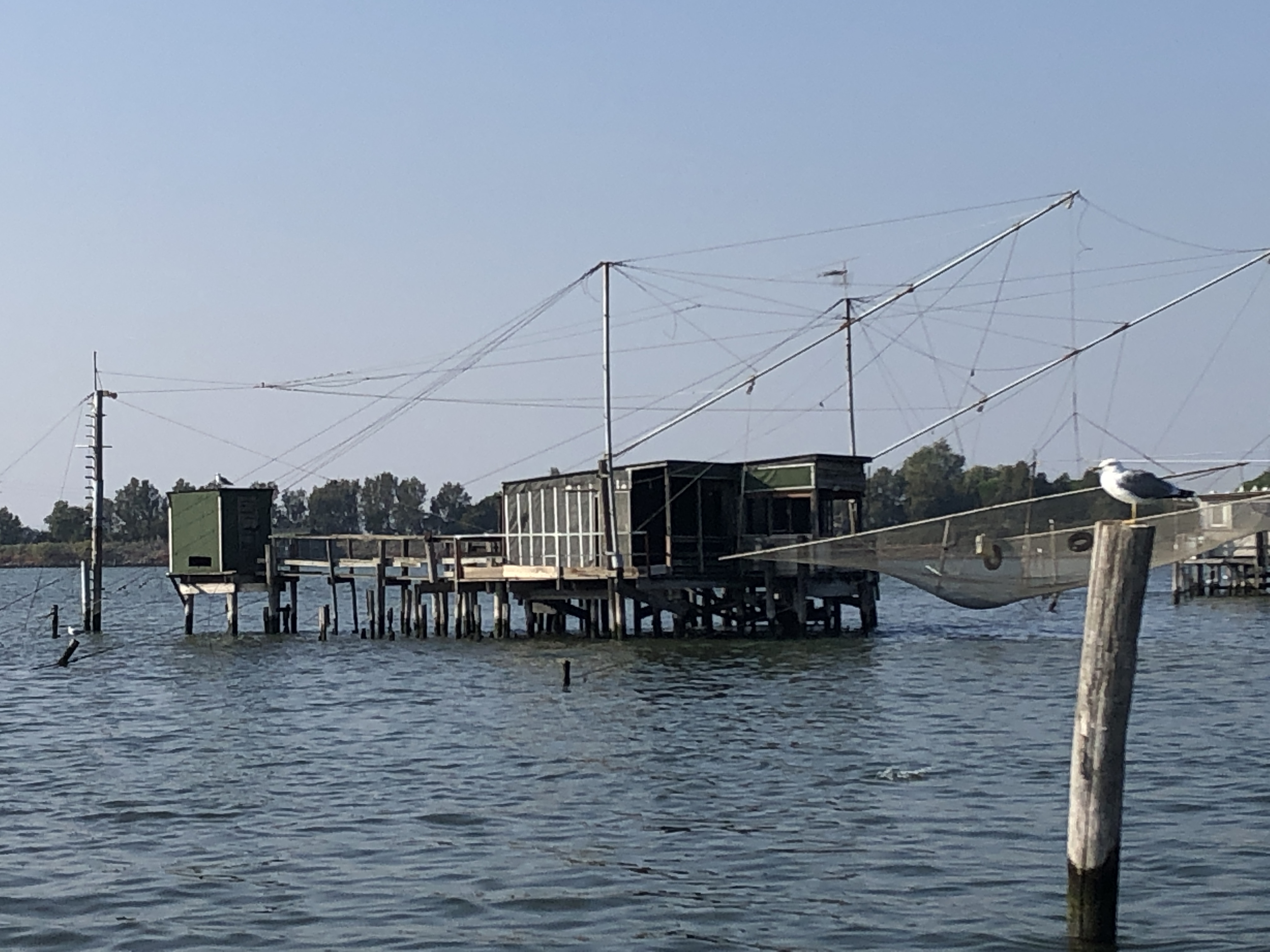
AN HOUR FURTHER SOUTH is the small city of Ravenna. When the Roman Empire began to disintegrate around 350 AD, it split into two halves, in a desperate and futile bid to survive. The Western Empire was focused around Ravenna and became an important artistic and cultural hub. The Byzantine mosaics of Ravenna, dating from the 5th century are world famous to this day. In fact these mosaic decorations in the churches and public buildings of the city are now UNESCO world heritage sites. My favourite mosaics are found in the Basilica of Sant’Apollinare in Classe, about five miles south of Ravenna.
When I approach Classe from the south by car, I’m struck by the flat grass plains that surround the church and its bell tower. The church was strategically very important during the Second World War. It was a vantage point for the German army, who stationed troops and ammunition stores close to the basilica. They even had snipers stationed at the top of the historic romanesque bell tower.
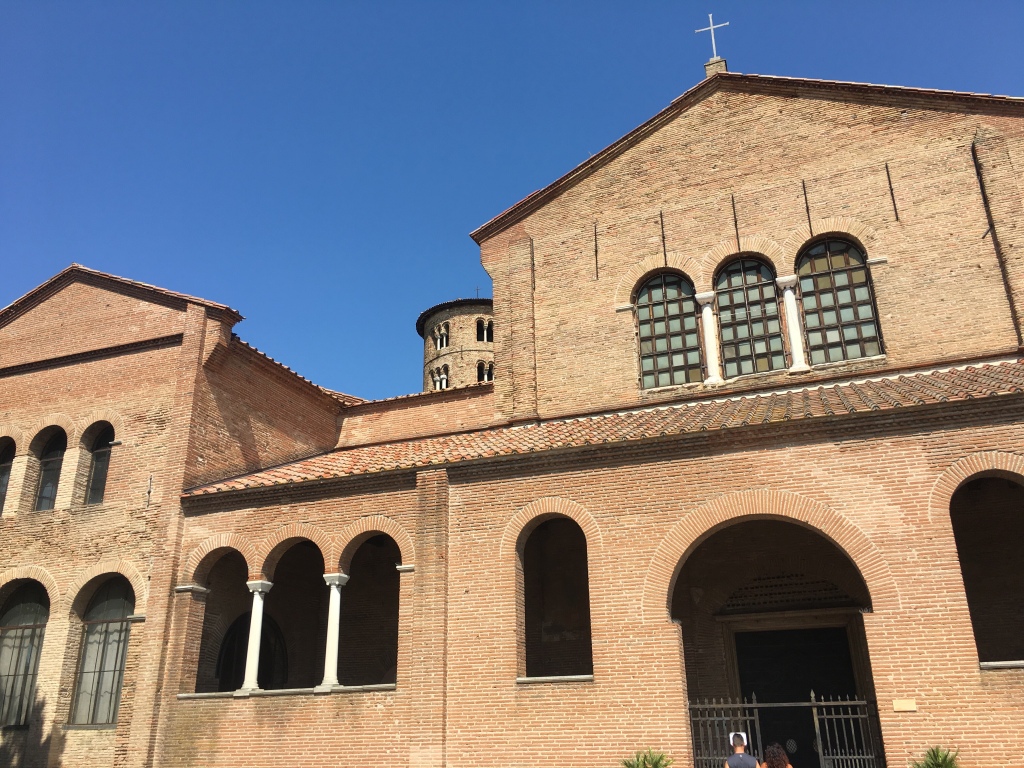


BYZANTINE MOSAICS – when I walk into the church leaving the dazzling, bright sunshine behind me it take a few minutes for my eyes to adjust to the interior gloom. As my vision adjusts, the elegance of the white marble columns that line the church come into sharp focus. The space is a huge, open, rectangular space, lined with carved, marble tombs. In front of me above the altar is a spectacular, brightly coloured mosaic. An idyllic representation of the Garden of Eden, with lush, green meadows, trees and animals. Green, gold and white dominates this scene of Paradise. Sant’Apollinare the patron saint of the church stands in the centre hands out stretched as if blessing the congregation. The mosaic dates from the 6th century.
FROM THE TOP – At the top of the wall the Evangelists (gospel writers) are represented: Matthew (winged man), Mark (lion), Luke (calf) and John (eagle). Then comes a flock of sheep making their way out of the gates of the cities of Jerusalem and Bethlehem. Every image is carefully rendered in brilliant mosaic tiles. The individual tiles are known as tesserae – they are about one centimetre square and consist of a series of layers, sandwiched together, glass, colour, glass. Mosaic making skills were well known by the Romans and were developed by the Byzantine craftsmen of Constantinople.

THE WAR – During the war Italy was occupied by the Germans. When the allied forces landed in Sicily and Southern Italy in 1943 they started a long and painful military advance northwards through the peninsula. Numerous small groups of ‘special forces’ operated behind enemy lines, working with Italian partisans to try to overthrow the Germans.
One particularly interesting character was Lt. Col. Vladimir Peniakoff, a maverick officer in the British army, known as Popski, who led a small group of elite soldiers, under the intimidating name of ‘Number 2 Demolition Squadron’. Popski and his brave band operated many miles inside enemy lines. It was their job to find German positions and encourage them to surrender!
CLASSE – At Classe there was a large number of German troops surrounding the magnificent basilica and it’s world class mosaics. Everyone feared a massive attack and the terrible bombardment that could follow. Popski hand-picked a small band of elite soldiers and partisans – known locally as ‘Popski’s Private Army’. He advanced on Classe with just 35 men and managed to convince the Germans that a huge attack was imminent. They fled north leaving Classe, it’s basilica, bell tower and mosaics undamaged. Popski is a hero in these parts – there’s a marble plaque in the entrance to the church thanking him for his role in protecting the basilica.



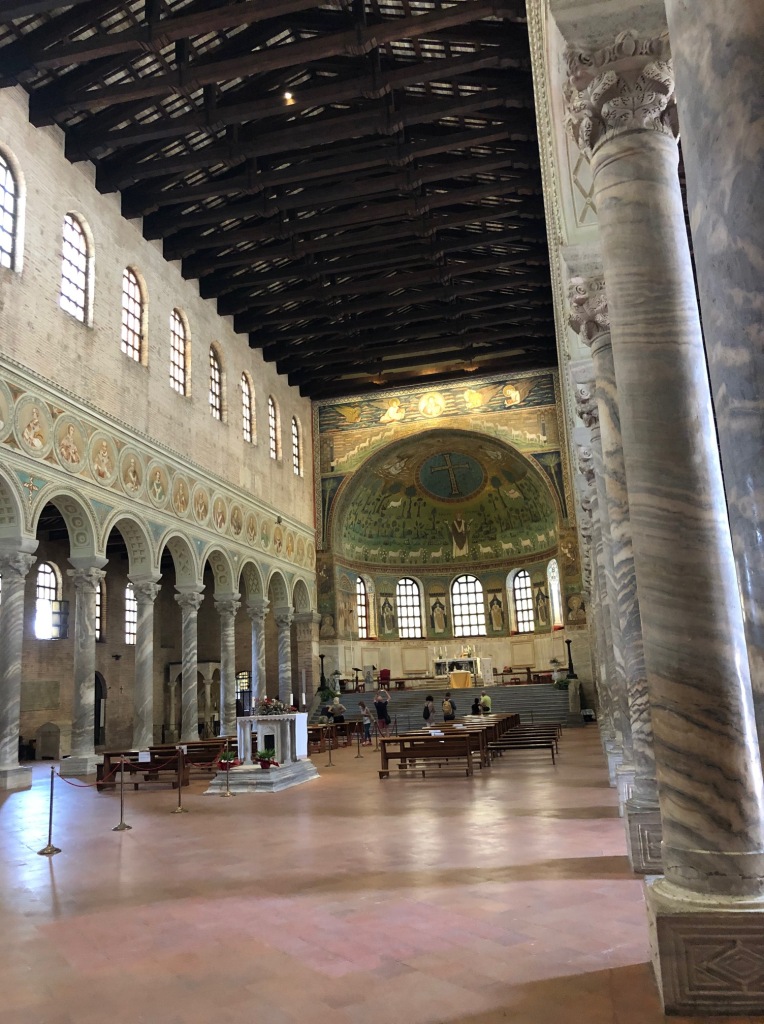




The mosaics in Classe are unique in terms of their colour, clarity and quality. Every time I walk into the church I am almost overwhelmed by their beauty. Then when I think of Popski and his clever and effective actions for saving this important historical site I smile to myself and admire the human ingenuity that created this work of art and then later preserved it. A visit to Classe always works as a perfect antidote for my departure from Venice. Great art and a magical tale of courage and heroism. Perfect for inspiration, creativity and a little bit of a story.
Notes:
The province of Ravenna has written a great article about Popski – here’s the link. It’s in italian and very good – maybe I’ll translate it one of these days: https://www.turismo.ra.it/en/myravenna/stories/popski-sant-apollinare-in-classe-bormbardamento/ – photos are super too!




- Published: 08-08-2018
- Updated: 04-09-2018
- Updated: 27-10-2019 / 27-10-2022
- Enjoy!

Thanks for another adventure in a familiar place. I love the memories your writing brings back, Janet. Thank you!
LikeLiked by 1 person